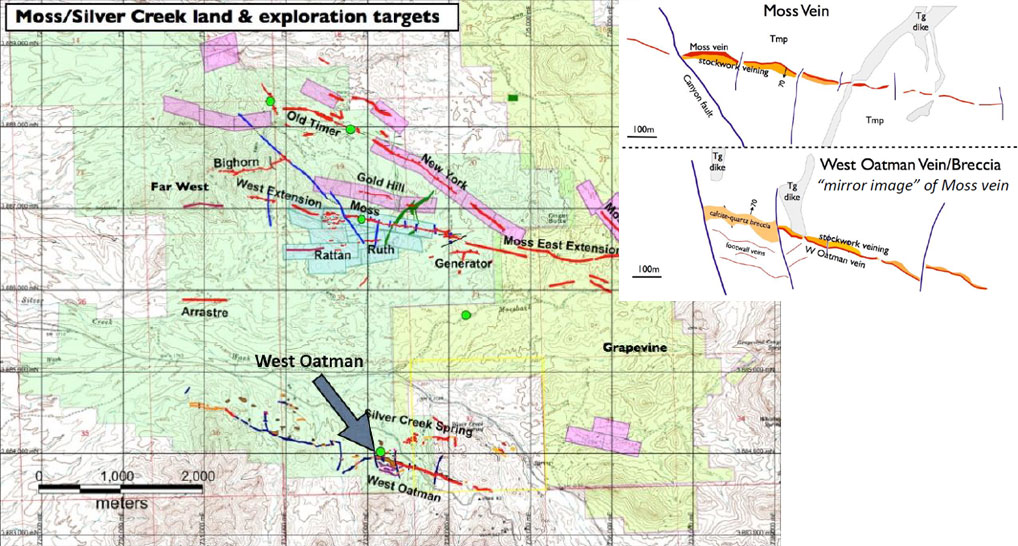Regional Exploration
Epithermal vein systems on the approximately 165 square kilometer Moss property are associated with right-lateral Walker Lane transtensional structures. The vein systems are hosted in and cut magmatic, volcanic, and volcaniclastic rocks associated with the formation of the Miocene Silver Creek Caldera. More than two million ounces of gold and one million ounces of silver were produced from low sulfidation epithermal veins in the historic Oatman District between 1870 and 1980. The Company has identified multiple low sulfidation epithermal veins for follow-up exploration on the broader Moss property using a combination of remote sensing and geophysical techniques in conjunction with the USGS Mineral Resources Data System (see map below). Of particular interest is the intersection between the curviplanar eastern margin of the caldera and the right-lateral sigmoidal Walker Lane structures in the Florence Hill and Grapevine areas. Significant advanced argillic alteration and silica ledges, coincident with aeromagnetic geophysical anomalies, is developed at the intersection of these structures. Interestingly, the main historic Oatman District vein system extends from this intersection to the southeast, with the West Oatman and Moss vein systems extending from this intersection to the northwest. The possibility that the low sulfidation epithermal systems and alteration zonation are vectoring back to the potential mineralization source in the structural intersection represents a significant exploration target for the Company. Exploration of the Moss property is following a telescoped approach, from infill drilling at the Moss mine, through near-mine resource definition drilling and along-strike medium- to long-term resource delineation drilling, to true greenfields exploration.




